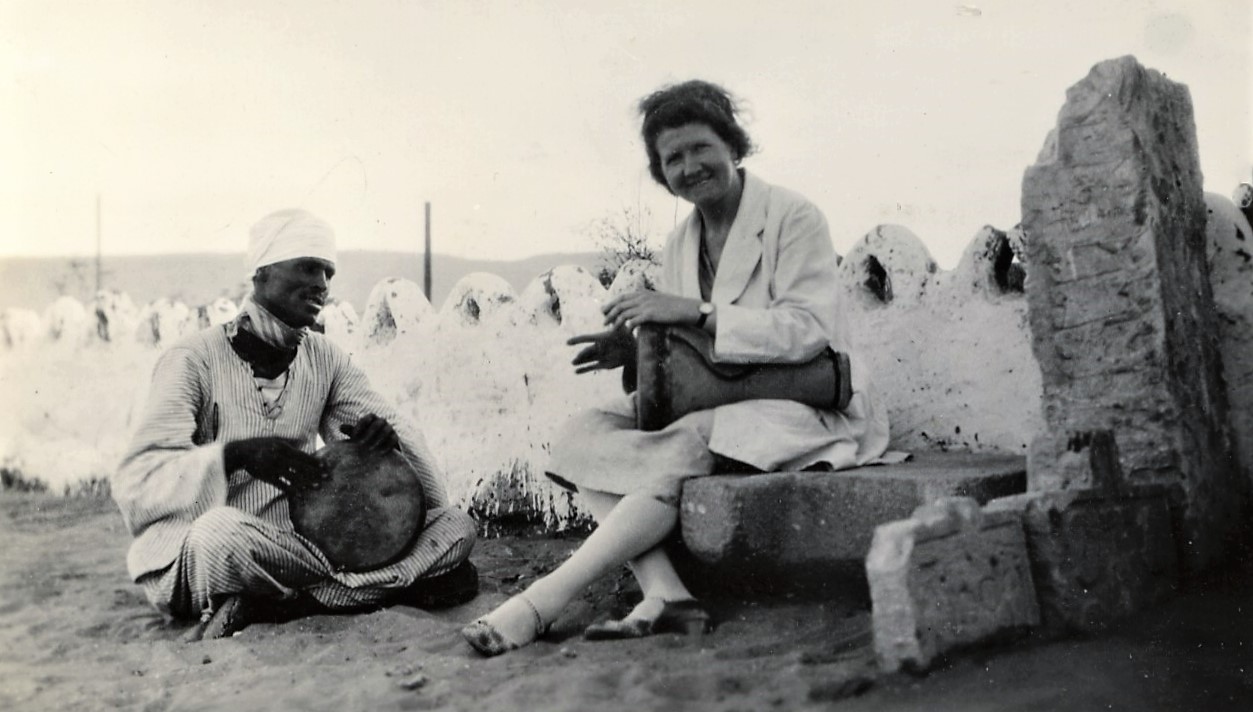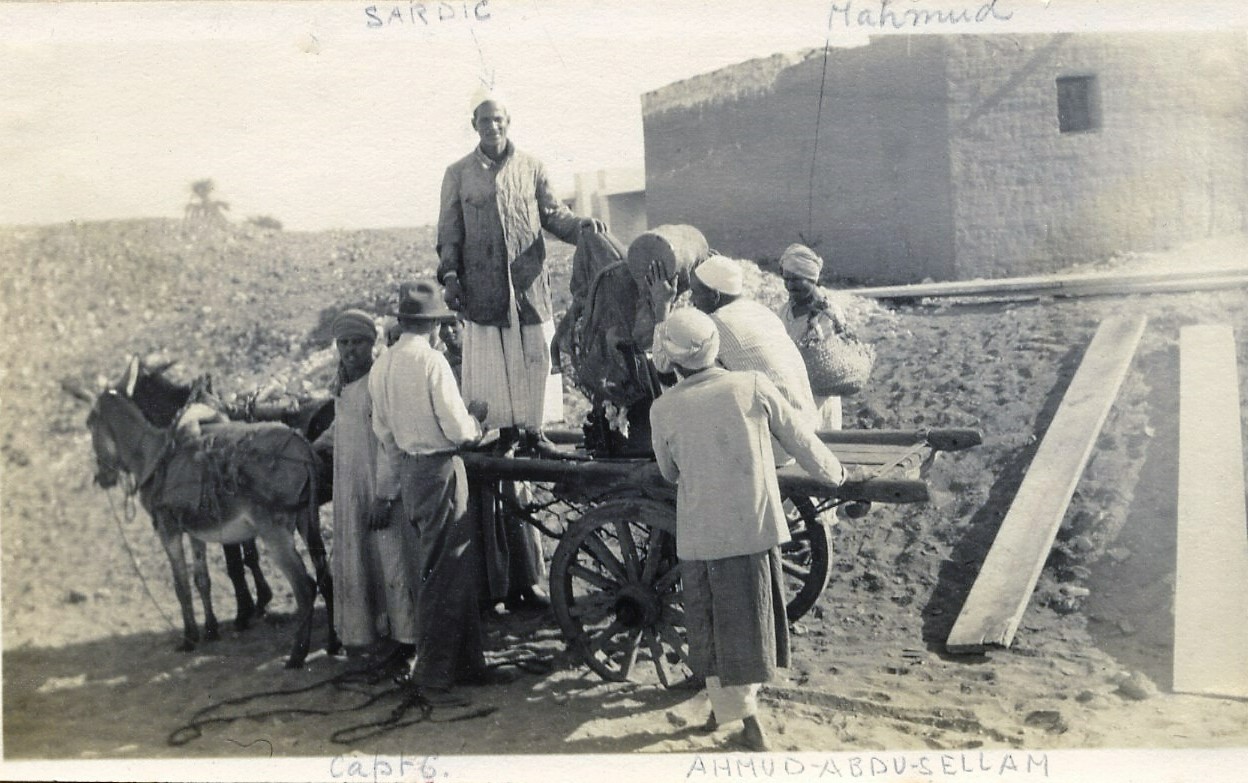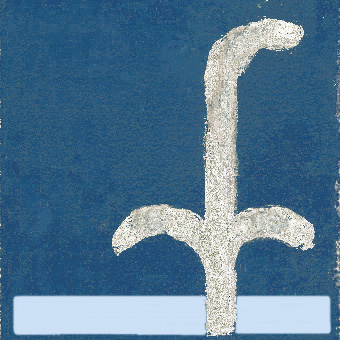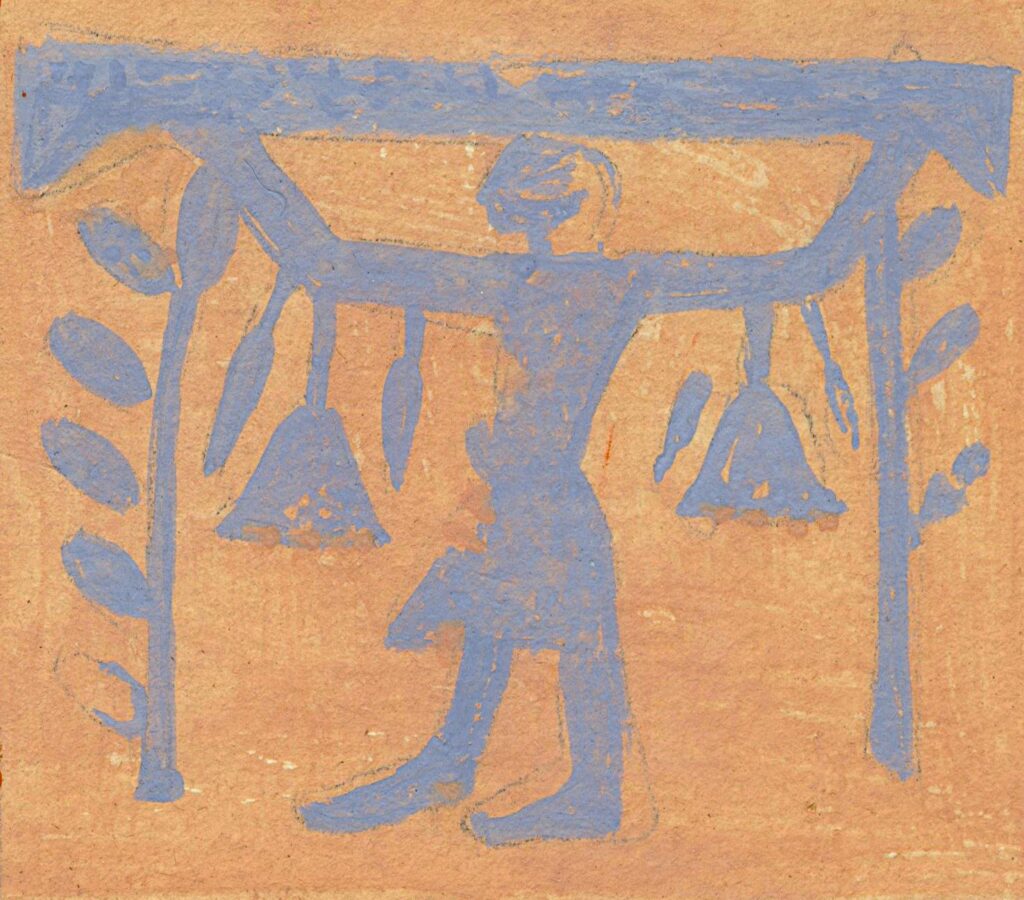
Learning Arabic – 1
Author: Susan Biddle.
This post is the first of a series about Myrtle Broome’s experience of learning Arabic. This post looks at her earliest experiences with Arabic and her first formal lesson.
When Myrtle Broome and Amice Calverley first started work in Abydos in the 1920s, they could both speak a little Arabic. In one of her earliest letters to Dr Alan H. Gardiner, before it was even certain that she would be going to Abydos, Amice reported that she was studying Arabic. Sitting on the terrace of the Eastern Telegraph Hotel at Port Said before lunch, on their first day together in Egypt in October 1929, Amice and Myrtle were the target of persistent sellers of “tourist tat”, but Myrtle told her parents that “Miss C. dealt with them in Arabic most effectively”.
Myrtle was always keen to learn more of the language, and not just the essentials required for the work. Returning from tea with the local police officer after dark early in the first season, it was “glorious to see the stars, we learnt some of the Arabic names for them from one of our guards”. Not all of the team showed the same enthusiasm. Amice’s brother Captain Hugh Calverley, who was responsible for the generator and the photography, knew a similar amount of Arabic. Myrtle told her mother that “he gets on very well, when Arabic fails he shouts directions in English & waves his arms about & makes an awful commotion, but they seem to understand what he wants somehow”. Hugh adopted this approach when the team’s electricity generator had to be loaded onto a mule cart at the start of a journey to the engineer at Nag Hammardi for repair. Myrtle explained to her mother: “there was a fuss & a hulla ba loo about [loading it onto the cart], everyone yells instructions to everyone else, & each one does exactly what he thinks most suitable until Capt C. comes on the scene & yells louder than all the others; a good British bawl”.

Photograph by Myrtle Broome, 1930
Bushey Museum and Art Gallery
Mr Beazley, the fourth member of the team, would not attempt even as much as Hugh Calverley. Myrtle told her mother that Mr Beazley “has had several lessons in Arabic, but he will not attempt to speak it”. He lazily preferred to rely on Myrtle, requiring her to ask their head servant, Sardic, to buy cigarettes and stamps for him, put the required stamps on a letter to England, and return the change from 20 piastres. Myrtle told her mother: “I did my best & thanks to Sardic’s intelligence it came out all correctly”.
When visited by a local Sheikh, Myrtle “managed to get through the polite greetings & reply to enquiries after my health”, but “then I was stumped”. She found that “I almost have to start learning all over again as the language is quite different to Cairo Arabic – all q’s are g’s and lots of the words are very different or have different shades of meaning”. While Amice was in Sohag and Cairo for a few days in November 1929, it fell to Myrtle to keep the local workers busy, which was “no joke … with such a limited vocabulary”. Hugh Calverley and Mr Beazley “were not a bit of help, they took an unholy joy in my difficulties”.
In early December 1940, Myrtle told her mother: “my Arabic progresses very slowly. I can give the necessary directions about ladders, pencils & all requirements for my work, fetchings & carryings etc. but I get stumped in ordinary conversation & I hate to keep asking, ‘what did he say?’ all the time. I pick up bits here & there, & am learning names of things but I am not at all quick at it”. By January 1930 she was able to have “quite a little conversation with Sardic”, who complimented her on her Arabic. However she was still “having a hard struggle with it, such a slight change of pronunciation alters the meaning for instance gemal is camel, but gemāl is beautiful. Some of the kh sounds are hopeless & the gh sound is pronounced more like an r. I get frightfully tangled up & find myself making the most extraordinary noises”. At the end of the first season, Myrtle concluded that “Arabic is a ghastly language to learn. There are a dozen ways of saying the same thing. I seem to have got as far as a few general remarks & there I have stuck”.
By the end of the second season things had improved significantly. Myrtle felt able to go on day trips by camel accompanied only by some of the Egyptian servants, telling her mother: “I don’t mind going off on my own a bit, it is rather a good thing to have to depend entirely on my Arabic”.
However, by the third season, Myrtle decided it was time to tackle the language challenge head on, and on 28 November 1931 she explained that “we are going to learn to write Arabic. We have asked the local schoolmaster to come for an hour [on] Saturday evenings to give us lessons. I don’t know how we shall get on, as he knows no English, but I expect it will be very amusing”. In her next letter, she gave a full account of that first lesson: “the schoolmaster arrived punctually at 5 o’clock; very fine & handsome in his best clothes, & after exchange of polite salutations Amice & I sat down with our pencils & paper to learn our Aleph – Be – Te. We did our best to be very serious & attentive, the schoolmaster wrote a letter & told us its sound value & we did our best to repeat it after him. We got along very nicely until we came to ‘wow-w’ said the schoolmaster. ‘wow’ said we in chorus. ‘Wow-w-w-’ said the cat solo fortissimo. This was too much. Our gravity gave way, we laughed & rocked with joy, the schoolmaster joining in our mirth, it really was the funniest thing I have ever known happen. We still jelly with laughter every time we think of it”.
After the first lesson Amice and Myrtle “struggle[ed] hard to memorise the alphabet. It is rather difficult as the beginning, middle, & final letters are different & one has to learn three sets”. Nevertheless, Myrtle proudly reported that “my writing of the Arabic characters has been much admired. Nannie [the housekeeper] says I write a better hand than any of the Sheikhs”. In her letter the following week, Myrtle included an example of “my beautiful Arabic alphabet, you read it from R to L”.

Letter 153, page 2
Characteristically, Amice was initially extremely enthusiastic. After the first lesson, Myrtle told her mother: “Amice as usual is very ambitious & has already ordered an Arabic newspaper!!!”. However, by mid-February, Myrtle indicated that “Amice has got tired of it, she says she hasn’t time, which is true in a way, as of course she has a number of official letters & accounts that occupy a lot of time & when she has spare time she likes to spend it in other ways but I think the real truth is that she is too impatient, she is so very quick at picking up languages by ear that she can’t be bothered with anything that requires hard plodding”. Amice later regretted that she had not persevered and admitted that “she would never have the patience” to work at Arabic as Myrtle did. At one point Amice suggested that Myrtle should give her Arabic lessons on the voyage home, but this plan came to nothing when she returned on a later boat than Myrtle. Myrtle however remained keen and continued her lessons with the schoolmaster until the school closed at the end of March, and in subsequent seasons.
Two years later, Amice had turned to other studies. In April 1934 Myrtle told her mother: “Amice is making a collection of Arab instruments. Among them is a drum & she is having lessons from our local drummer”.

Photograph by Myrtle Broome, 1934
Bushey Museum and Art Gallery
Sources:
Letters: 29, 33, 40, 44, 53, 57, 74, 122, 150, 151, 153, 173, 181, 189, 191, 287, 288.
Gardiner MSS 43 – Calverley Correspondence, Letter 184.
With thanks to:
- the Griffith Institute, University of Oxford, for the opportunity to work on the Broome collection, and the Abydos Enterprise correspondence within the Gardiner collection, and for their ongoing support for this blog
- the Bushey Museum and Art Gallery, for the photographs from their Myrtle Broome Collection
- the Artefacts of Excavation project, for biographical details for Alan H. Gardiner




